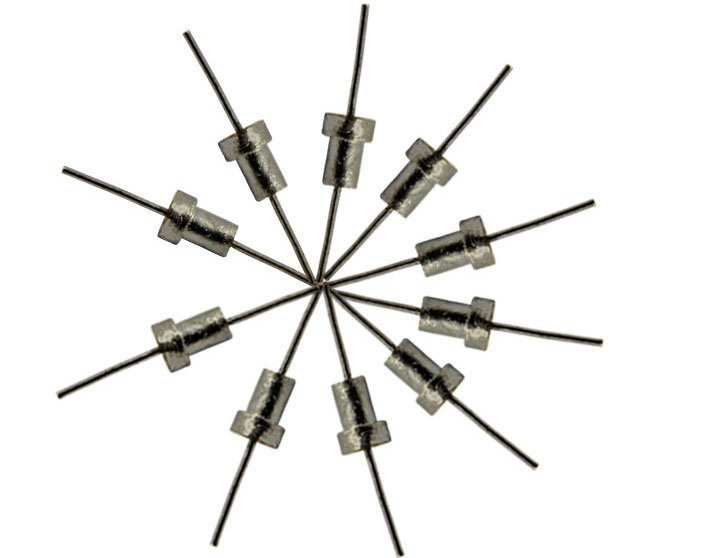The feed through capacitor is a three-terminal capacitor, but compared to the conventional three-terminal capacitor, because it is directly mounted on the metal panel, its grounding inductance is smaller, almost no lead inductance, and its input and output The ends are isolated by metal plates, eliminating high-frequency coupling. These two characteristics determine the filter effect of the feedthrough capacitors close to the ideal capacitance.
The self-inductance of the feedthrough capacitor is much smaller than the ordinary capacitor, so the self-resonant frequency is very high. At the same time, the through-the-heart design also effectively prevents high frequency signals from being directly coupled from the input to the output. This low-pass, high-impedance combination provides excellent rejection over the 1 GHz frequency range. The simplest through-heart structure is one (C type) or two capacitors (Pi type) composed of internal and external electrodes and ceramics.

Use editing
In actual engineering, the frequency of electromagnetic noise to be filtered is usually as high as several hundred MHz, or even more than 1 GHz. For such high-frequency electromagnetic noise, feedthrough capacitors must be used to effectively filter out. There are two reasons why ordinary capacitors cannot effectively filter high frequency noise.
One of the reasons is that the lead inductance of the capacitor causes resonance of the capacitor, which has a larger impedance to high-frequency signals and weakens the bypass effect of high-frequency signals.
Another reason is that the parasitic capacitance between the wires causes high-frequency signal coupling, thereby reducing the filtering effect. The reason why the feedthrough capacitor can effectively filter high frequency noise is that the feedthrough capacitor not only has no lead inductance, but also allows the resonant frequency of the capacitor to pass. The problem is low, and the core capacitor can be directly mounted on the metal plate, and the metal plate can be used for high-frequency isolation.
When using feedthrough capacitors, the problem to be noted is installation. The biggest weakness of through-core capacitors is the fear of high temperature and temperature shock, which will make it very difficult to solder through-core capacitors to metal panels. Many capacitors can be damaged during the soldering process. Especially when a large number of through-core capacitors need to be installed on the panel, as long as there is damage, it is difficult to repair, because when the damaged capacitor is removed, other capacitors will be damaged. As the complexity of electronic devices increases, hybrid circuits inside and outside the device are mixedly installed, and digital logic circuits are mixedly installed. The mutual interference between circuit modules has become a serious problem. One of the ways to solve the mutual interference of such circuit modules is to isolate circuits of different properties by using metal isolation chambers. However, all wires passing through the cofferdam will pass through the feedthrough capacitor, otherwise an isolation fault will occur.




